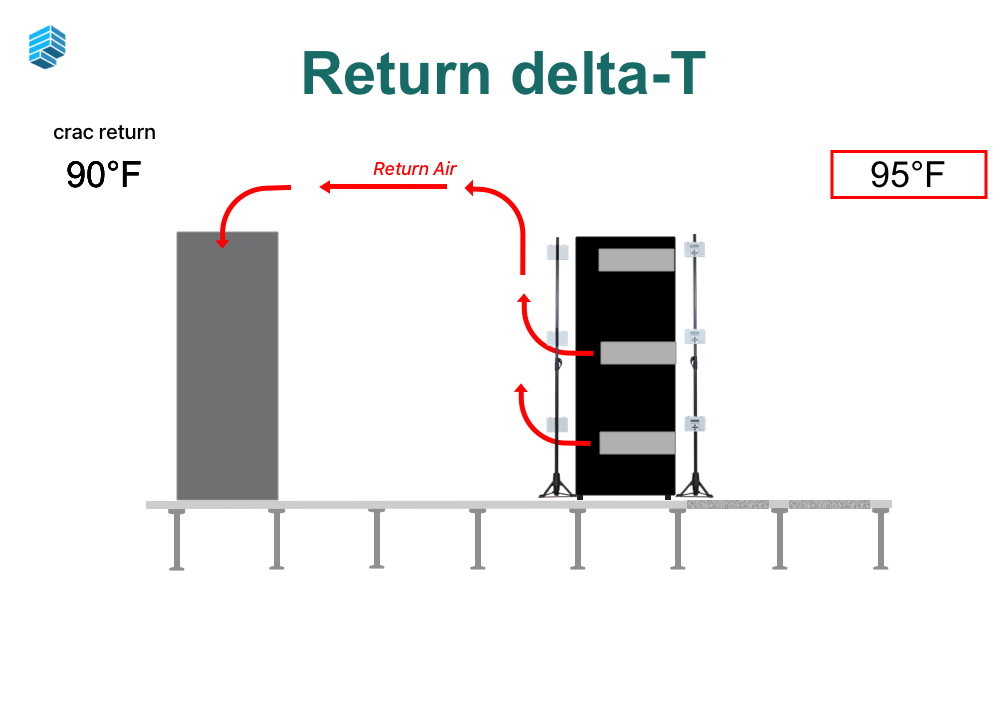The Four Delta-Ts: Unlocking the Secrets of Data Center Cooling Efficiency
Welcome to Keep Your Cool - a blog about simple cooling optimization strategies for the busy data center operators.
Most operators focus on one metric: the difference between supply and return air temperatures. But in reality, there are four delta-Ts—and understanding all of them is key to unlocking significant efficiency gains and energy savings.
CRAC Delta-T (Supply to Return Air)
This is the most commonly talked about delta-T: the temperature difference between the supply and return air at the CRAC unit. It’s a quick way to gauge cooling load and unit performance. A higher delta-T (typically 15°F–20°F) often means better efficiency.
2. Server Delta-T (Inlet to Outlet)
The second Delta-T is the difference in temperature between the IT equipment inlet and the IT equipment exhaust. This delta-T is often used to determine the thermal load on the IT equipment and to identify potential cooling issues. A lower delta-T here can help prolong the life of the equipment and improve overall efficiency.
3. Supply to Server Inlet Delta-T
The third delta-T is the difference in temperature between the supply air and the inlet temperature of the IT equipment. This delta-T is important because it determines how much heat the IT equipment is being exposed to. The smaller the gap, the better—less unwanted heat pickup means more consistent inlet temperatures and reduced risk of thermal stress.
4. Server Exhaust to CRAC Return Delta-T
The fourth Delta-T is the server exhaust to the CRAC-Return Delta-T. This measures how efficiently the hot air is routed back to the CRAC units. Ideally this number should be in the 15°F–25°F range. Unless there is some level of containment, cold air that should be going to the server inlet can mix with the server exhaust, lowing the exhaust temperature and reducing efficiency.
Why All Four Matter
Focusing on just one delta-T can hide inefficiencies that cost money and strain equipment. According to the Uptime Institute, improved airflow management can cut energy use by up to 40%. Managing all four delta-Ts together offers a complete picture of airflow health, ensuring you’re not missing hidden issues.
The Bottom Line
Measuring all four delta-Ts isn’t just for optimization—it’s for protecting uptime, extending equipment life, and reducing OPEX.
About Purkay Labs:
At Purkay Labs, we make it simple to capture, visualize, and act on all four delta-Ts—without installing permanent infrastructure. Our AUDIT-BUDDY system provides quick, rack-level insights so you can identify inefficiencies before they cost you. If you’re ready to see what your data center’s four delta-Ts are telling you, contact us today to schedule a walk-through or spot-check.




